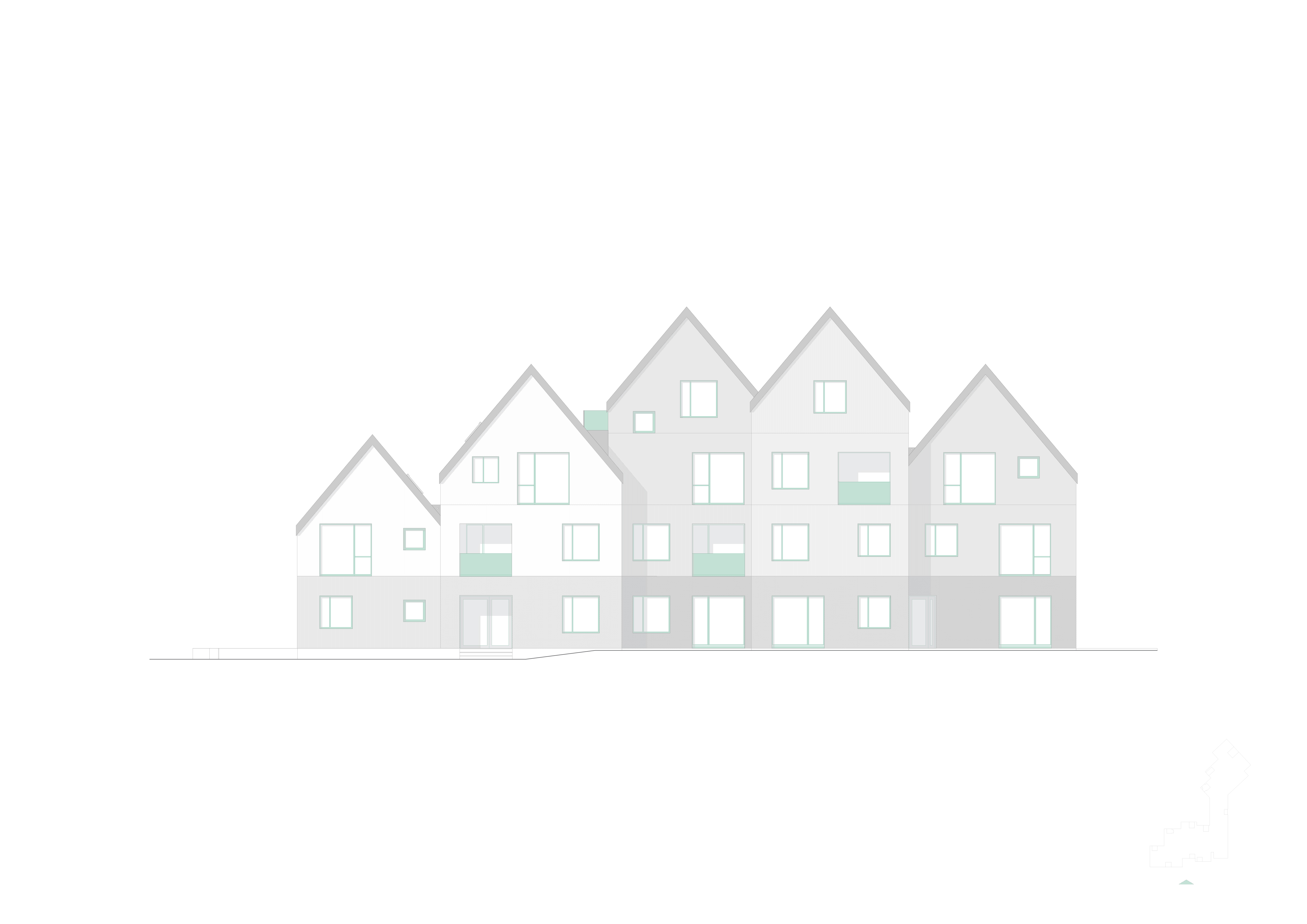Olarilor Housing
 Prize of the Collective Housing section at the National Architecture Biennale, București, 2021
Prize of the Collective Housing section at the National Architecture Biennale, București, 2021  Nominated at the Balkan Architecture Biennale, Belgrad, 2021
Nominated at the Balkan Architecture Biennale, Belgrad, 2021Brașov, Romania
Client:
private
private
Project duration:
2016-2021
2016-2021
Gross area:
3.560 m²
3.560 m²

Located in a residential area in
Brașov, within a fragmented urban fabric, the apartment building is placed on a
double-frontage plot that opens up towards two streets of different characters,
Olarilor and Neagoe streets. The project inserts itself within the scale of the
place through an assemblage of volumes whose placement on the site negotiates
with the rules of the immediate context.
The project is composed of two volumes that reiterate the scale and rhythm of the adjacent dwellings. The elevation difference between the two streets represents one of the features that generate the architectural solution, dictating the split-level height differences within the volume built perpendicular to the slope and creating a series of semi-private terraces at different elevations within the courtyard.
The building comprises 38 units of 29 different typologies, the majority of which are duplex and triplex apartments with loggias, terraces and ample private gardens that define an intermediary dwelling typology mediating between an individual residence and collective housing. The double aspect allows the apartments to open up towards the old city centre and the surrounding forested hills. Three circulation nodes distribute the access to the units and at the same time solve the elevation difference. Additionally, the building features a shared space that opens towards one of the courtyard terraces.
The balance of solid and void on the facades and the volume carvings defining exterior spaces create a play of depths, which constitutes, together with the pitch roofs, an adaptation to the local climate. On the facades, the finishes mark a podium level unifying the two volumes.
The project is composed of two volumes that reiterate the scale and rhythm of the adjacent dwellings. The elevation difference between the two streets represents one of the features that generate the architectural solution, dictating the split-level height differences within the volume built perpendicular to the slope and creating a series of semi-private terraces at different elevations within the courtyard.
The building comprises 38 units of 29 different typologies, the majority of which are duplex and triplex apartments with loggias, terraces and ample private gardens that define an intermediary dwelling typology mediating between an individual residence and collective housing. The double aspect allows the apartments to open up towards the old city centre and the surrounding forested hills. Three circulation nodes distribute the access to the units and at the same time solve the elevation difference. Additionally, the building features a shared space that opens towards one of the courtyard terraces.
The balance of solid and void on the facades and the volume carvings defining exterior spaces create a play of depths, which constitutes, together with the pitch roofs, an adaptation to the local climate. On the facades, the finishes mark a podium level unifying the two volumes.
















Project Team:
Architects
Adrian Untaru
Bogdan Brădăţeanu
Andrei Șerbescu
Laura Mihalache
Adrian Bratu
Mihaela Dobre
Adrian Untaru
Bogdan Brădăţeanu
Andrei Șerbescu
Laura Mihalache
Adrian Bratu
Mihaela Dobre
Photographers:
©Vlad Pătru
©Sabin Prodan
©Vlad Pătru
©Sabin Prodan
Copyright © adnba 2003-2025 | Terms and Conditions
Facebook, Instagram, LinkedIn
